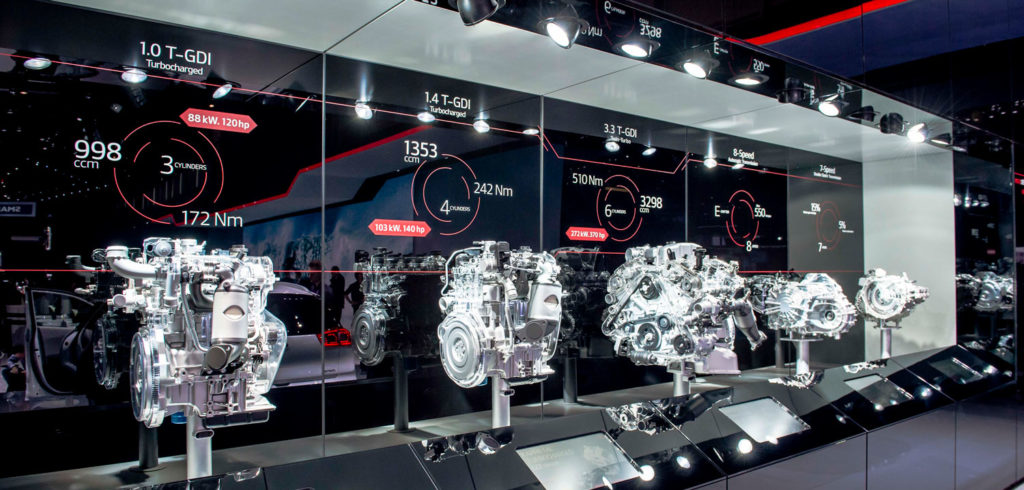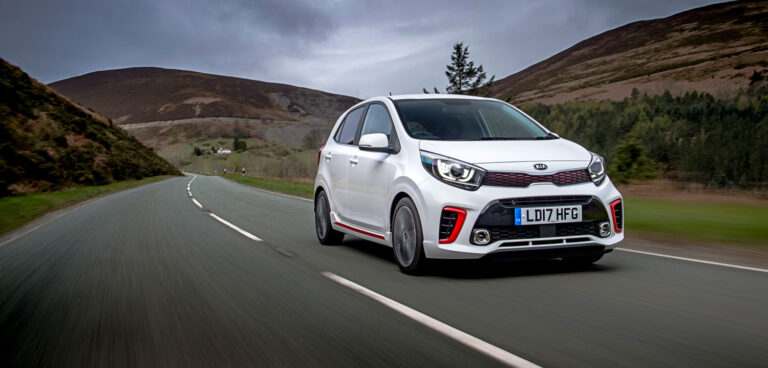A new turbocharged, direct injection 1.0 T-GDi three-cylinder engine has been added to the Kia Picanto range in the UK. With 99bhp and 171Nm, it is the most powerful engine that’s ever been available in a Picanto. The new engine was introduced earlier this year in other markets.
The 1.0 T-GDi is the new range topper and will only be available as a GT-line, which adds a sporty appearance package and a 7.0in touchscreen display with GPS. Prices start at £13,320 (US$17,674). The 1-liter is always coupled to a 5-speed manual; an automatic transmission is only available on the 1.2-liter naturally aspirated four-cylinder engine.
Laser-drilled injectors with six holes laid out in a pyramid shape evenly inject a fine mist of fuel into the cylinders at high pressure (up to 200 bar). A straight air intake port ends in a sharp air intake throat, reducing air resistance at all stages of the process. This is said to improve cylinder tumble flow for faster, more efficient combustion while suppressing engine knocking.
The turbocharger is a single-scroll unit that is integrated into the exhaust manifold and features an electric wastegate motor. The increased flexibility of the electric wastegate motor improves turbocharger performance while scavenging clean air for the engine to re-use for combustion. At the same time, it allows the wastegate to open to improve the flow of spent exhaust gases. Kia says the system increases low-end torque, improves throttle response across the rev range and lowers fuel consumption at high loads. The results are 99bhp at 4,500rpm and 171Nm of torque from 1,500rpm to 4,000rpm.
The exhaust manifold is integrated into the head and can be cooled independently from the engine block, thanks to a dual-thermostat split cooling system. The main thermostat controls the flow of coolant to the cylinder heads above 88°C to reduce knocking, while the engine block thermostat shuts off coolant flow at 105°C to reduce friction and improve efficiency.
There is continuously variable valve timing on both the inlet and exhaust sides while friction between moving parts has been optimized. The crankshaft is offset from the centre-line to aid smoothness. Together, these measures aim to reduce turbo lag.



